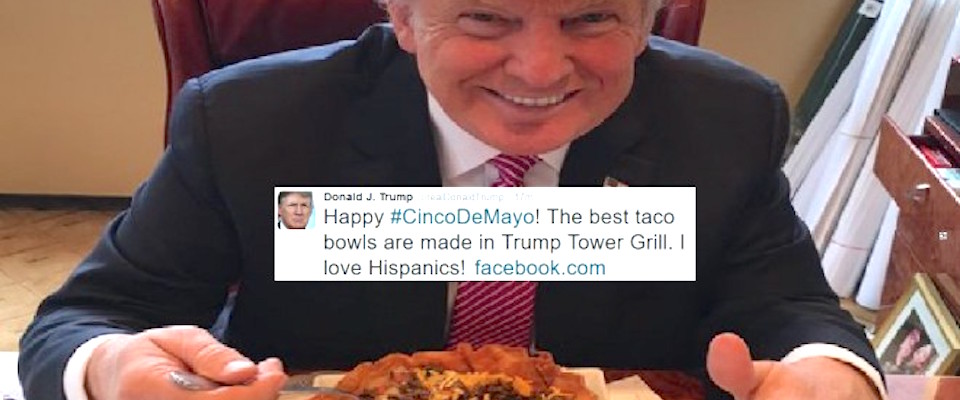In January 2016, David Fahrenthold, a political reporter at The Washington Post, took note as Donald Trump promised to donate $6 million to help veterans, including $1 million of his own, during a televised fundraiser. As he followed the presidential candidate to rallies across the country, Fahrenthold saw him hand over about $1 million in oversized checks from his foundation. What happened to the rest of the money? he wondered. Fahrenthold expected it would take him a couple of days to find out. He couldn’t imagine that a presidential candidate would be misleading about charitable donations on television or risk embittering veterans in the middle of a campaign.
Fahrenthold spent a month doing what any reporter would—calling people who would know and asking questions—but at the end could only account for $3 million. “I’d done as much as I knew how to do, and that was the beginning of me trying to look for ways around the Trump stonewall,” he told a group of reporters gathered at the recent Logan Symposium on Investigative Reporting at UC Berkeley.
Instead of holding his cards close to his chest, as most investigative reporters do, Fahrenthold decided to do the opposite. He took to social media to enlist the public in helping him ferret out the facts. In a notebook, he jotted down in blue ink the names of hundreds of nonprofits to which Trump could’ve given money, starting with those he’d spoken highly of or rented ballrooms to, for example. In black, he wrote down what happened when he called the charities to ask if they’d received money from Trump. Most lines said “NEVER.” Fahrenthold shared photos of the notebook on Twitter and asked readers to send the names of other likely charities; dozens responded.
“We pride ourselves on our ability to find things, but so much of what I can do is limited by my experience,” he said. “If you reach out to readers, a lot of them have context and ideas and information you don’t have…I was struck by how much readers liked seeing the process and being part of the hunt.”
In another coup, Fahrenthold got a tip suggesting Trump had used his foundation’s money to buy a portrait of himself. He asked followers to help him find the portrait, to verify whether it was indeed used for charitable purposes. After Fahrenthold put out a call on Twitter, it took just 14 hours for someone to snap a photo of the painting hanging in Trump’s golf resort in Doral, Fl.
“We used to have a president who made bold promises about press freedom, and we worried that he wouldn’t keep his promises,” said Ed Wasserman, dean of Berkeley’s Grad School of Journalism. “Now we have an administration that makes a lot of bold promises about the media, and we worry they will keep their promises.”
In the end, Fahrenthold’s reporting revealed that only half of the money Trump raised for vets made it to charities, that his eponymous foundation was mostly funded by others, and that he used it to make payouts to businesses and settle lawsuits. When Fahrenthold won a Pulitzer for his work last month, the committee said he’d “created a model for transparent journalism in political campaign coverage.”
On social media, Fahrenthold—who is also responsible for breaking news of a video capturing Trump’s lewd comments about women—has managed to engage readers on both sides of the aisle, even if they’d never read his paper in print. For example, when Trump’s team failed to respond to his questions, he started posting them on Twitter. “I got so many retweets and responses just from asking questions. It helped me, and it also brought people into the process in a way that readers really enjoyed.”
The Fahrenthold Method, as it has become known, is one way that journalists are responding to the unique challenges presented by Donald Trump, the first U.S. president who has sued the media for defamation. His administration has repeatedly disregarded facts, vowed to toughen libel laws, and called journalists the “enemy of the people.” It has also both benefited from and stoked a polarized media environment, in which nearly three-fourths of Americans say the news media is biased.
“We used to have a president who made bold promises about press freedom, and we worried that he wouldn’t keep his promises. Now we have an administration that makes a lot of bold promises about the media, and we worry they will keep their promises,” Ed Wasserman, dean of UC Berkeley’s Graduate School of Journalism, said at the conference.
While many politicians are prone to preen or prevaricate, Trump’s personality is unique, according to several journalists who have covered him. “He loves attention, he’s deeply insecure, he doesn’t like facts, he’s a pathological liar, he’s fun, he’s charismatic. He lacks emotional, intellectual and strategic discipline,” said Timothy O’Brien, author of TrumpNation: The Art of Being the Donald. (Trump unsuccessfully sued O’Brien for libel and has called him a “psychopath.”)
O’Brien argues that the press too readily bought into the image Trump cultivated of a successful, wealthy entrepreneur and was too slow to reveal his track record of business failures. One culprit, he says, is reporters’ lack of financial literacy. “One of the challenges of Trump’s presidency is he’s had a business history…Some folks stay away from those stories because they feel it’s above their heads, and that held the press back,” he said at the conference.
Susanne Craig, who covers Trump for The New York Times, says he is prone to long tangents and rapid mood swings. Her response to the sometimes bizarre conversations she had with him was to write about the experience of interviewing Trump for “Times Insider.” The Associated Press, CBS News, and The New York Times have also tried to convey Trump’s unusual way of speaking by releasing full transcripts of interviews.
In an administration that often plays fast and loose with the truth, publications have taken different stances on whether to use the word “lie,” which indicates an intent to mislead. The New York Times used “lie” in a headline about Trump’s insistence that former president Barack Obama wasn’t born in the United States. “It was effective because it was done so sparingly,” Craig said.

The Washington Post, on the other hand, has a policy against calling anyone a liar. “Our view on it is that intent is hard to prove…and it’s a slippery slope,” Steven Ginsberg, senior politics editor at the newspaper, said at the symposium.
The sheer amount of unflattering news means that journalists have to get more judicious, according to O’Brien. “All of us can get scandal fatigue, and the media is going to have to get savvy about which stories it plucks of that morass to try to convey to readers and voters what matters,” he pointed out.
Craig says that reporters sometimes adopt a “breathless” tone when covering Trump’s every tweet and should avoid getting distracted from the real issues, including those that ultimately matter to Trump voters. “It’s incumbent on reporters not to lose track of the fact that we’re going through one of the largest deregulations we’ve seen…There are so many things happening below Trump,” she said.
Craig, who often covers Trump’s finances, was among several journalists at the symposium who said they worried about a potential chilling effect on the press by a president who is willing to threaten reporters with lawsuits and yell at them. She got nervous earlier this year when she got called by the Internal Revenue service for the first time. “Was it a coincidence or not? It breeds paranoia and worry…The constant calls and wearing down of reporters has a potentially larger effect [than legal threats],” she said.
David Sassoon, founder and publisher of the nonprofit InsideClimate News, says for him the election was a wake-up call about the state of environmental coverage.
“Environmental news, particularly news about climate issues, is not being covered in the heart of the country in local media. It’s been hollowed out in the center of the country…in the financial difficulties of journalism in the last decade,” he said.
The publication has responded by sending reporters to cover climate and energy issues in places like Georgia, Louisiana, and Ohio. Sassoon is hoping to raise money to hire local reporters based in Middle America. He argues that journalists play a critical role in bearing witness and providing explanations in a dangerously polarized country.
“I think we owe a debt of gratitude to Donald Trump. He has invigorated an often lethargic and access-driven group of journalists who have taken up the challenge,” said Brian Ross, chief investigative correspondent at ABC News. “So thank you, Mr. Trump, for waking us up.”
“It’s not about injecting our news in these places,” he says. “There’s an ideological divide, an abyss, a gap—and we’re actually interested in going into the gap, not one side or the other.”
Yet making sure stories actually reach target audiences remains a formidable challenge, especially when social media platforms enable people to consume news within their chosen “bubbles.” “Social media platforms are the ringmasters of the vast online circus…[which] rests on the pauperization of the news business [and] favors the sensational over the significant and even over the factual,” Wasserman said at the conference.
The Wall Street Journal has responded by launching “Blue Feed, Red Feed,” which shows liberal and conservative Facebook feeds on certain political issues side-by-side, while The Guardian’s “Burst Your Bubble” highlights conservative viewpoints.
Despite the challenges, Trump isn’t necessarily bad for journalism—and might be invigorating it. Despite his attacks against mainstream media, he regularly gives interviews and even scoops to the traditional heavyweights. He hasn’t actually sued a newspaper for libel in three decades. Brian Ross, chief investigative correspondent at ABC News, argues that the president has in fact fueled a renaissance in investigative reporting.
“I think we owe a debt of gratitude to Donald Trump. He has invigorated an often lethargic and access-driven group of journalists who have taken up the challenge,” Ross said. “So thank you, Mr. Trump, for waking us up.”
As Fahrenthold put it when a conservative reader taunted him after the election: “Listen buddy, Donald Trump is like a Full Employment Act for Journalists.”




















